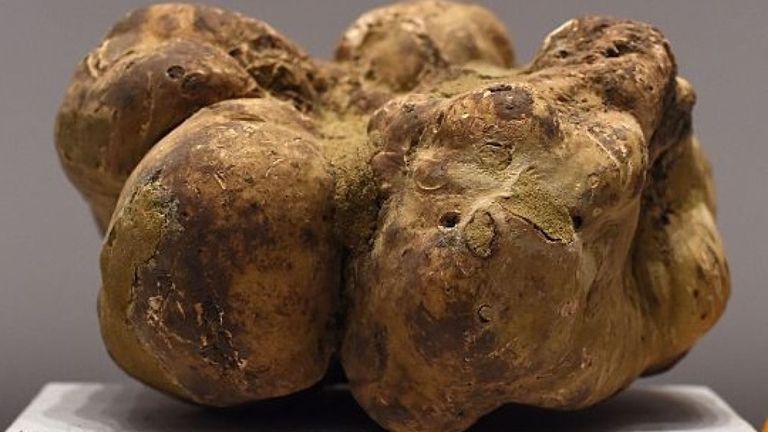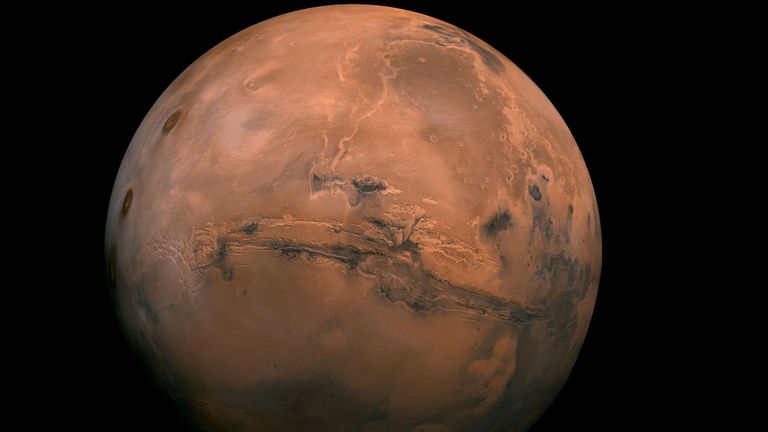Organic molecules found on Earth in coal, crude oil, and white truffles have been discovered on Mars, suggesting the possible existence of early life on the planet.
The thiophene molecules were probably produced through biological processes, rather than chemical ones, according to Washington State University astrobiologist Dirk Schulze-Makuch.
The announcement comes as NASA's Curiosity rover captured its highest-resolution panorama of the Martian surface yet, composed of more than 1,000 images and 1.8 billion pixels.

Image:A molecule found in white truffles has been discovered on Mars
Alongside Jacob Heinz at the Technische Universitat in Berlin, Mr Schulze-Makuch explained his team's reasoning in a new paper published in the journal Astrobiology.
"We identified several biological pathways for thiophenes that seem more likely than chemical ones, but we still need proof," Mr Schulze-Makuch said.
"If you find thiophenes on Earth, then you would think they are biological, but on Mars, of course, the bar to prove that has to be quite a bit higher," he added.
The pair considered that meteor impacts could create the compound because of the huge pressures involved, as could a particular kind of chemical process which would require the compounds to be heated to 248F (120C) or more.
But the scientists believe that the biological scenario is more likely, saying that bacteria which could have existed when Mars was warmer and wetter more than three billion years ago could have produced the compound.
The data collected by the Curiosity rover has provided a lot of clues, but the techniques it uses to analyse large molecules means that scientists are only able to look at fragments.

Image:Definitive proof of life may have to wait for a manned mission
NASA's next Martian rover, the Rosalind Franklin - which is expected to launch in July - will be better equipped to make these analyses.
One of the instruments it is carrying, the Mars Organic Molecule Analyser (MOMA) uses a less destructive method which will allow it to collect larger molecules.
Mr Schulze-Makuch and Mr Heinz hope the next rover will look for carbon and sulphur isotopes, which would provide another great clue as to whether life existed on Mars.
"Organisms are lazy," explained Mr Schulze-Makuch. "They would rather use the light isotope variations of the element because it costs them less energy."
But even if the new rover does provide this isotopic evidence, it might not prove definitively whether there is or was life on Mars.
"As Carl Sagan said 'extraordinary claims require extraordinary evidence'," Mr Schulze-Makuch said.
"I think the proof will really require that we actually send people there, and an astronaut looks through a microscope and sees a moving microbe."
 简体中文
简体中文




